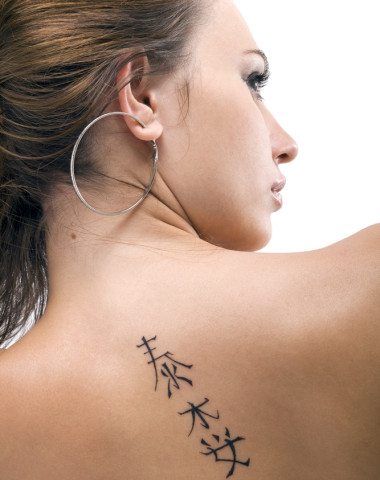Cynosure Affinity QS high-powered Q-switched Nd:YAG laser is one of the most effective and powerful tattoo removal technologies of today.
Using a dual wavelength system it can cover a broad spectrum of tattoo colors. With serial visits, tattoos can now be removed safely and efficiently.
What was once permanent can now be ancient history.
Effective Tattoo Removal With The Q-Switch Laser
Although tattoo trends come and go, the tattoo themselves last forever. Sometimes a once loved tattoo may become somewhat of an eyesore. What may have seemed like a good idea at one point in your life can often fall out of fashion and no longer suit. Luckily, at Rao Dermatology, our Q-Switch laser treatment is an effective mechanism for tattoo removal.
Q-Switched, also known as the Q-Switched Nd-Yag Laser is primarily used to remove, brown spots, freckles, and tattoos from the skin.
How Does The Q-Switch Laser Treatment Work
During a tattoo removal procedure, laser light is applied to the tattooed area of the skin. The light is selectively absorbed by the tattoo ink particles, leaving the surrounding skin tissue and chromophores unharmed.
The tattoo ink particles absorb the laser energy, heat up, and shatter into smaller ink particles.
In the days and weeks following a laser treatment, the body’s immune system flushes away the shattered ink particles, causing the tattoo to fade. Over a series of treatments, more and more of the ink shatters, leaving the skin free of ink.
Tattoo ink can be difficult to shatter and remove, and only Q-switched lasers are able to produce sufficient fluence (energy or power) to remove dark and bright tattoos without unattractive side effects like scarring. Q-switched laser pulses last mere nanoseconds (billionths of a second), providing high levels of fluence for quality ink shattering.
What Kind Of Tattoo Can Be Removed?
A tattoo’s color, depth, and chemical composition all affect how it responds to laser light; though the Q-YAG Laser Tattoo Removal works best on darker colors such as black, red, dark orange and dark blue. Lighter colors such as green, purple, brown, light orange and light blue can also be eliminated effectively, however, may require more treatments.
Does Laser Tattoo Removal Hurt?
The laser light will selectively target the undesired ink or pigment while leaving the other tissues largely unaffected; therefore, most patients report only minor discomfort. Many people compare the sensation of the pulses entering the skin, to the quick snap of a rubber band; however, if such “snaps” make you feel uncomfortable, we may offer you topical anesthesia.
Most patients have experienced only minimal discomfort during the laser tattoo removal procedure. The application of a topical anesthetic can be discussed during your consultation.
What Happens After Laser Tattoo Removal?
Immediately after the procedure, the treated areas may be sensitive and swell slightly. Swelling may last a little longer, but can be reduced by cooling the skin with an ice pack.
The tattoo will fade over the next few weeks. There is little to no downtime related to laser tattoo removal. You should be able to return to work and resume regular activities immediately after the procedure. After each treatment, your skin may be red or feel sunburnt. Each patient’s personal experience of the side effects of treatment will vary.
How Long Does Laser Tattoo Removal Take?
Depending on the size and location of the tattoo, treatment typically takes about 10 to 30 minutes. Some tattoos may completely fade after only one treatment, though most may require a multiple of four or more.
Laser tattoo removal treatments are usually spaced 3 weeks apart, in order to give your body sufficient time to fully eliminate the loosened particles of tattoo ink or pigment.
The number of sessions and required time between each session will depend on several factors; such as, the location of the tattoo, skin type and color, types of inks and colors used, the depth of ink in the skin, the age of the tattoo, and general health of the patient.
Why do I need multiple sessions?
Just like when you got your tattoo, it probably took a few sessions, it is the same with removing your tattoo. That is because tattoo ink is layered into your skin and each removal laser treatment chips away at shattering and dissolving layers of ink which your body will flush away in the weeks after your treatment.
Each time we perform a treatment, we cover the area as completely as possible and break up as much ink as possible. Tattoos that are less dense and just shading are quicker to remove than those with thick, dark lines.
What Side Effects Might I Experience?
Patients most commonly experience some redness, swelling, and minor blistering of the skin after their tattoo removal laser treatment. Blistering is the most common side effect, but left alone to heal, these blisters disappear quickly and leave no long-term damage or mark. Any side effects are very temporary, and your skin will heal completely and quickly. Detailed after-care instructions are always discussed and explained to help clients manage their skin after the treatment.
Book Your Free Q-Switch Laser Consultation Today
If you think Q-switch laser treatment is for you, please book your free consultation with us using the form the below.

